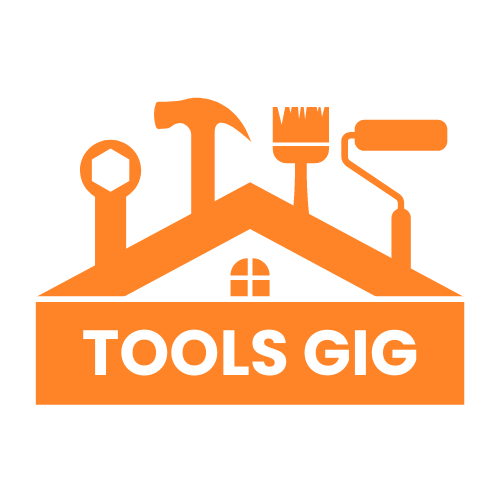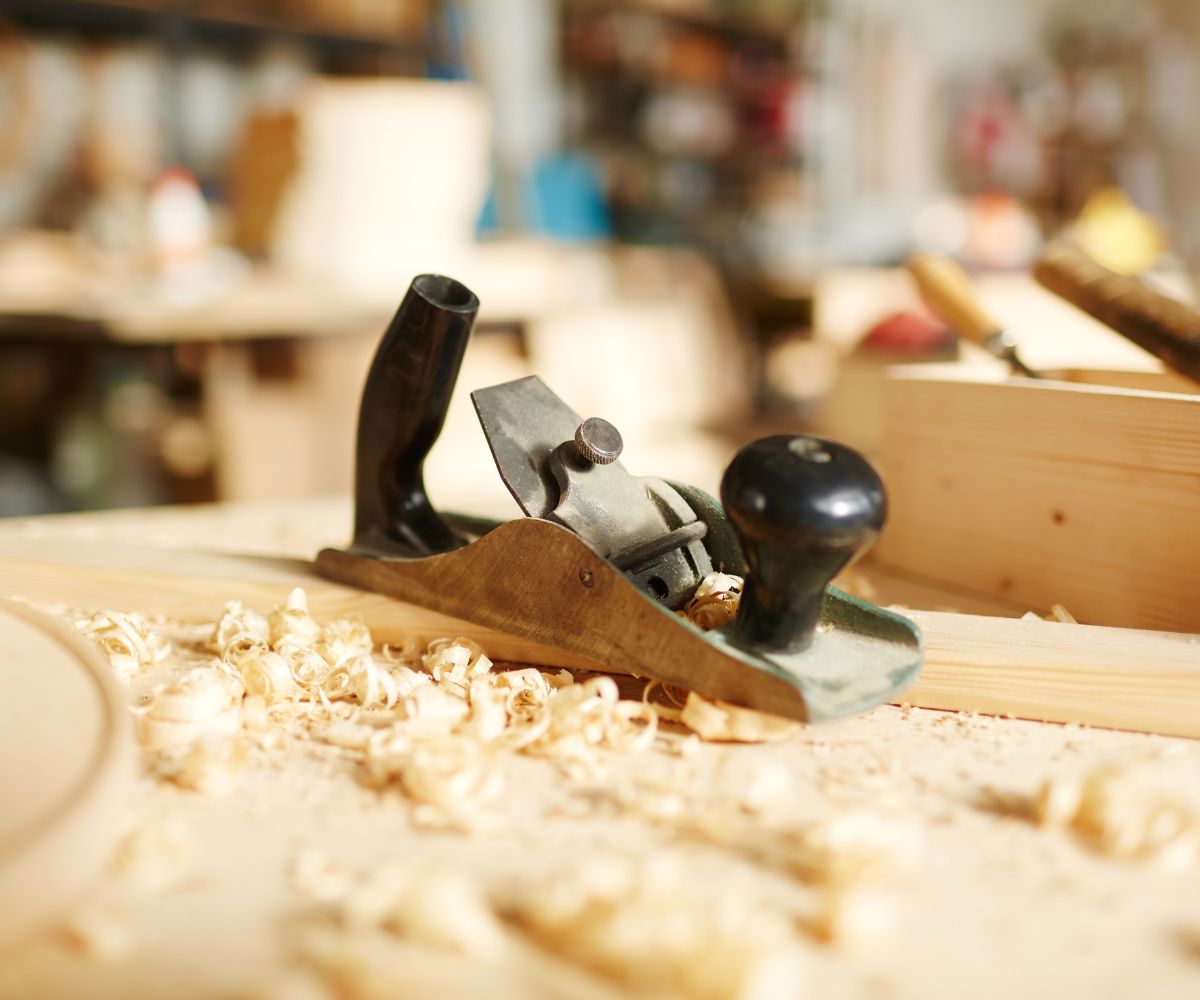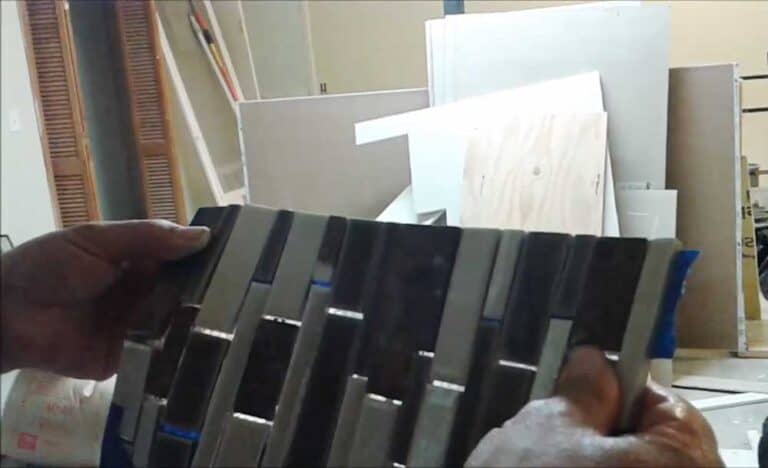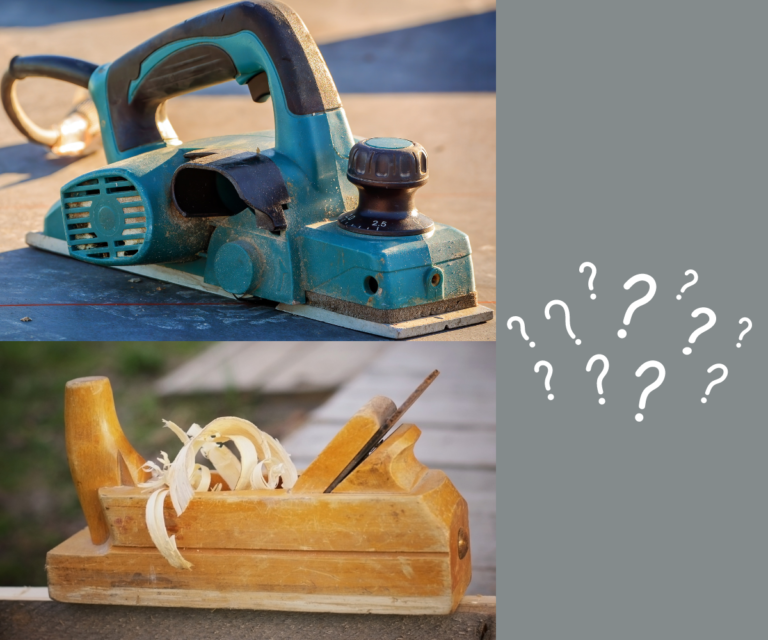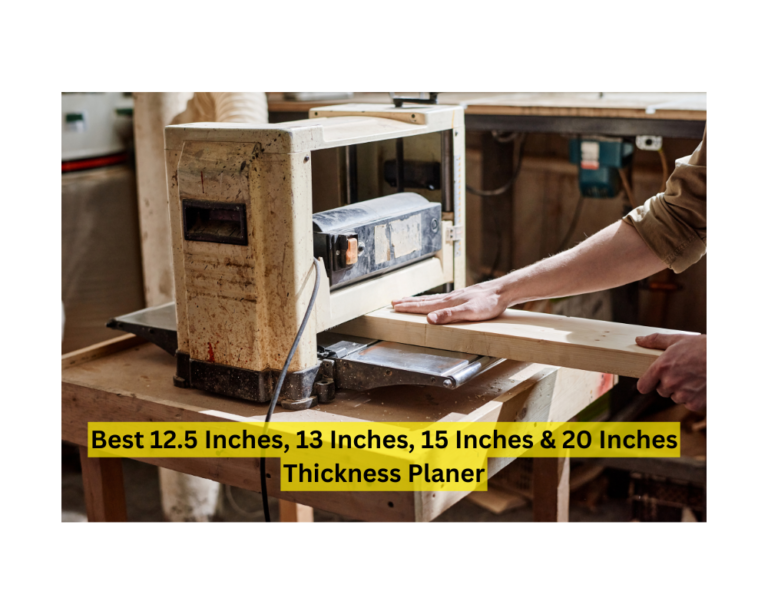Can You Use a Hand Planer for Wide Boards? – Pors, Cons & More!
As an Amazon Associate I earn from qualifying purchases.
A hand planer can be a beneficial tool when you have a wide board that won’t fit on your power benchtop thickness planer; though it trims slower than the bigger one and takes more time, you can easily use portable hand planers on wide boards.
A hand planer is a free-hand tool with a sharp and wide surface to easily move over the board surface to get a flat, straight, and smooth surface.
Let’s take a look at the detailed description and other aspects to see can you use a hand planer for wide boards and what we should do before planing wide boards!
Contents
Can you use a hand planer for wide boards?
A hand planer comes in two types; manual hand planer and electric hand planer. The good thing is that it is possible to use both these planers for wide boards.
But you have to know that depending on the capabilities, you will get a better finish with less effort in one than another. So let’s see which one is more preferable for you to use on wide boards.
Manual hand planer on wide boards
A manual hand planer uses muscular power, and they are much smaller and have a smaller platform that covers less surface. As it is manual, it takes more physical effort, but the main thing is that it has a sharp blade that pulls off wood pieces easily.
Sliding the planer on the board and doing more passes at one point alone through the board where you see a high or unequal surface, you can flat and smooth a wide board.
Disadvantages while using manual planer on wide boards
As it is a small manual planer and uses muscular power for that reason, it’s been tough to cover wide surfaces, which is its drawback.
Time: It’s a powerless tool and depending on your muscle power, and hand movement, one has to deploy more time trimming the wide rough surface to make it smooth, and that could waste your precious time.
Energy: Being manual, you have to slide it again and again on the board using your muscle power and have to deploy more pressure that, takes more effort and reduces your stamina or energy in a quick time.
Finishing quality: Finishing quality may not be good if you are not well-focused on using it for a long time and do not make passes on unequal surfaces with pressure.
Electric hand planer on wide boards
An electric hand planer uses electricity as a source of power; they are bigger in size, have a wider platform to cover more surfaces, and pre-installed 2 or 3 sharp blades on their back to rotate quickly to trim with less effort.
For a wide platform and sharp and fast rotating blade, it can pull off more wood chips in a single pass, and by sliding this power hand planer on the warped or unequal surface of the wide board, you can easily flatten and smooth the wide board.
Disadvantages while using an electric hand planer on wide boards
Over-trimming: The blades of this portable power planer rotate really fast, and while sliding on the wide surface, the equation of shaving wood chips from unequal places may get wrong, and you may over-trim the surface and sometimes leave rough edges.
Tough to handle: As it is a motor-powered planer, for that reason, it generates more power that creates more vibration and shakiness, which makes it harder to control on wide surfaces.
Note: To control it more effectively, use both hands every time you run it.
Burn marks: A planer is known for making old wood look like new, but as the blades generate more heat while shaving, for that reason while, trimming one spot for a long time can burn that spot instead of making it look like new.
How wide boards can a hand planer plane?

Since hand planers are free-hand tools, there’s no limit to how you plane the wide board. You can plane as long as the board is. But you have to be a skilled worker and have better control over the hand planer while reducing the board’s thickness. Neither some parts will shave more, while others will shave less.
As for my usage, 2×4, 2×6, 2×8, and 4×4 feet wide boards are more preferable to use on hand planers. But the thing is, as much your hand can go through a board that’s the preferable size, you can use a hand planer.
Note: Electric hand planers can trim or shave better in case of planning longboards. As they don’t have to put pressure using muscle power while sliding like the manual hand planers.
What should we do before planing a wide board?
For personal protection and better control, one should follow some steps while using a hand planer.
Goggles and mask: While trimming and shaving, a hand planer produces a huge amount of wood dust and chips that could harm you. So, before planing, always wear goggles and masks.
Marking: Take a pencil and sketch through the board or sketch on the high or unequal spots to get a better idea of where to trim more and do less. You can also find out where you’ve already trimmed to gain more control on board.
Surface and clamp: Always work on a flat surface and use clamps to attach the workpiece or board tightly to the surface so that it doesn’t shake or become unstable while using a hand planer.
How to check if my wide board is plane or not?
While planing and after planing, it is necessary to check if your workpiece is plane or not to build furniture, doors, and frames. There are two popular working techniques you can use.
Flat wood or Scale: Take a flat wood piece or a scale and slide it on the board. You can easily see and find those gaps with the naked eye if there are still high or unequal spots.
Flat surface: The surface you are planing your workpiece probably should be flat. If that is flat, then after planing one side, rotate the board and place it on the flat surface to check if it is plane or not.
Hard wood or soft wood, which one is good for planing with a hand planer?
Depending on the quality of the portable planer, sharpness of the blade, control, and power of sliding the planer on the wood surface, you can mill, shave or trim to a uniform thickness to have a smooth surface.
Though softwoods are mostly used to plane on a hand planer, I prefer hardwoods, and they are good for planing with a hand planer if you know the basics and have enough experience and control on the hand planer.
Beech, maple, poplar, pine, and mahogany are the woods you can easily work with a hand planer.
Frequently Asked Questions
Does a hand planer make wood flat?
Yes, a hand planer makes wood flat and straight and squares the edges. Sliding on the wood surface, it mills, shaves, or trims the wood surface to a uniform thickness to make it flat as your project needs.
Is a planer better than a sander?
Depending on the working context, a planer can be better than a sander. A sander is used to polish, smooth, and clean spots or coating from the surface. A planer can also do it, but a sander can do it more finer.
Though a sander does it finer, it takes a lot of time to do it, whereas a planer can do this job faster, even on longboards, and saves time. Also, you can use a sander to have more precious work after flattening with a planer.
Do Planers Create a lot of Dust?
While trimming and shaving a wood surface, a planer pulled off extra wood to make it flat and smooth, which creates huge amounts of chips and sawdust in every pass.
To have protection from this, use a shop vac or dust-collecting tools and always wear goggles and marks while using a planer.
Conclusion
Both the manual hand planer and power hand planer can be used for wide boards, but the result won’t be the same, and one can take more time and hard work than the other.
I hope I covered all the aspects and you understand all those and got the answer; now use one that you have. Thank you.
